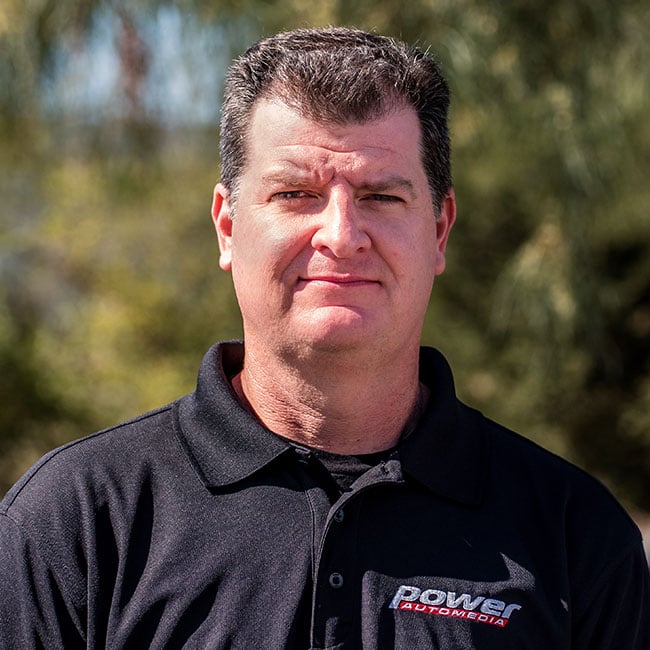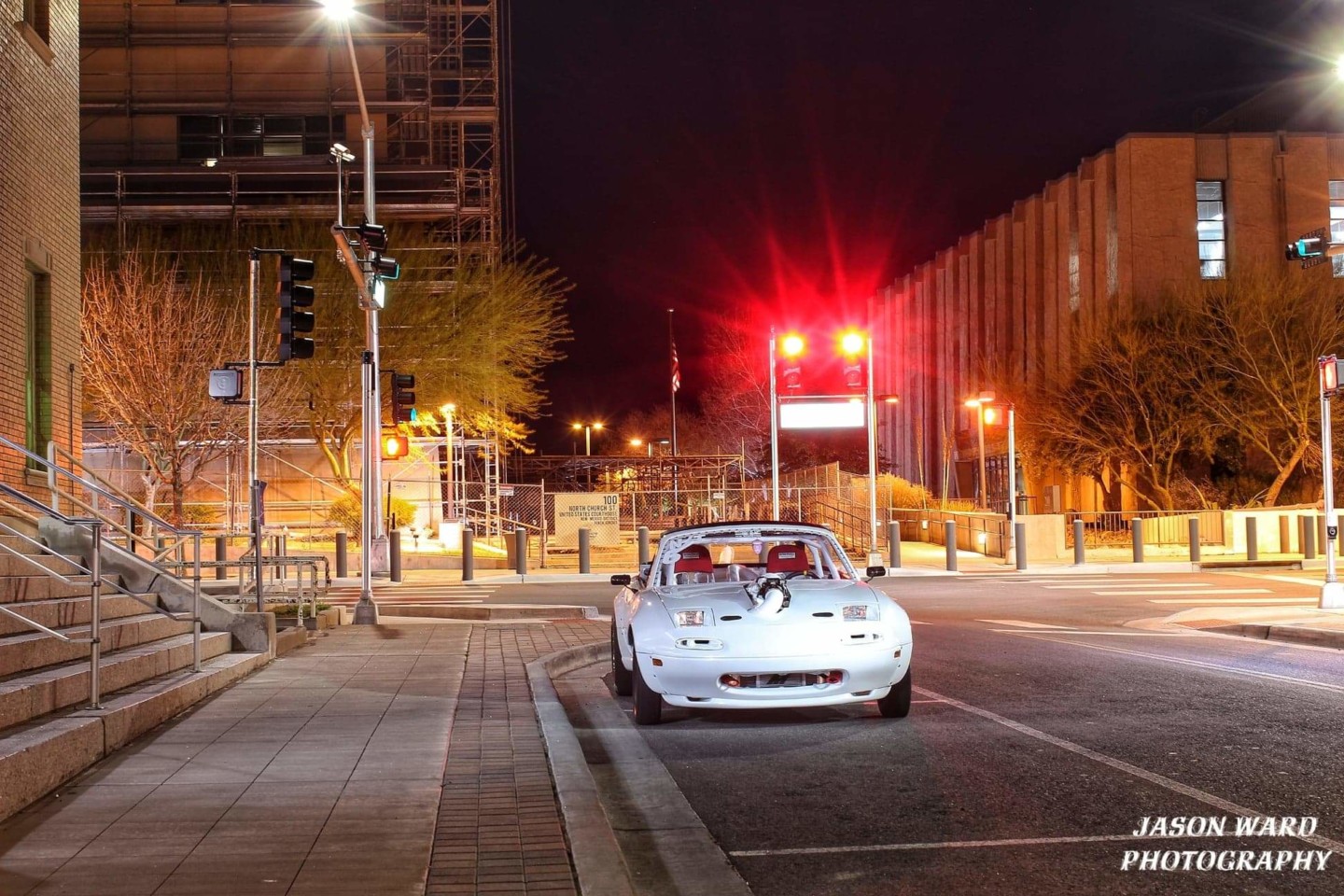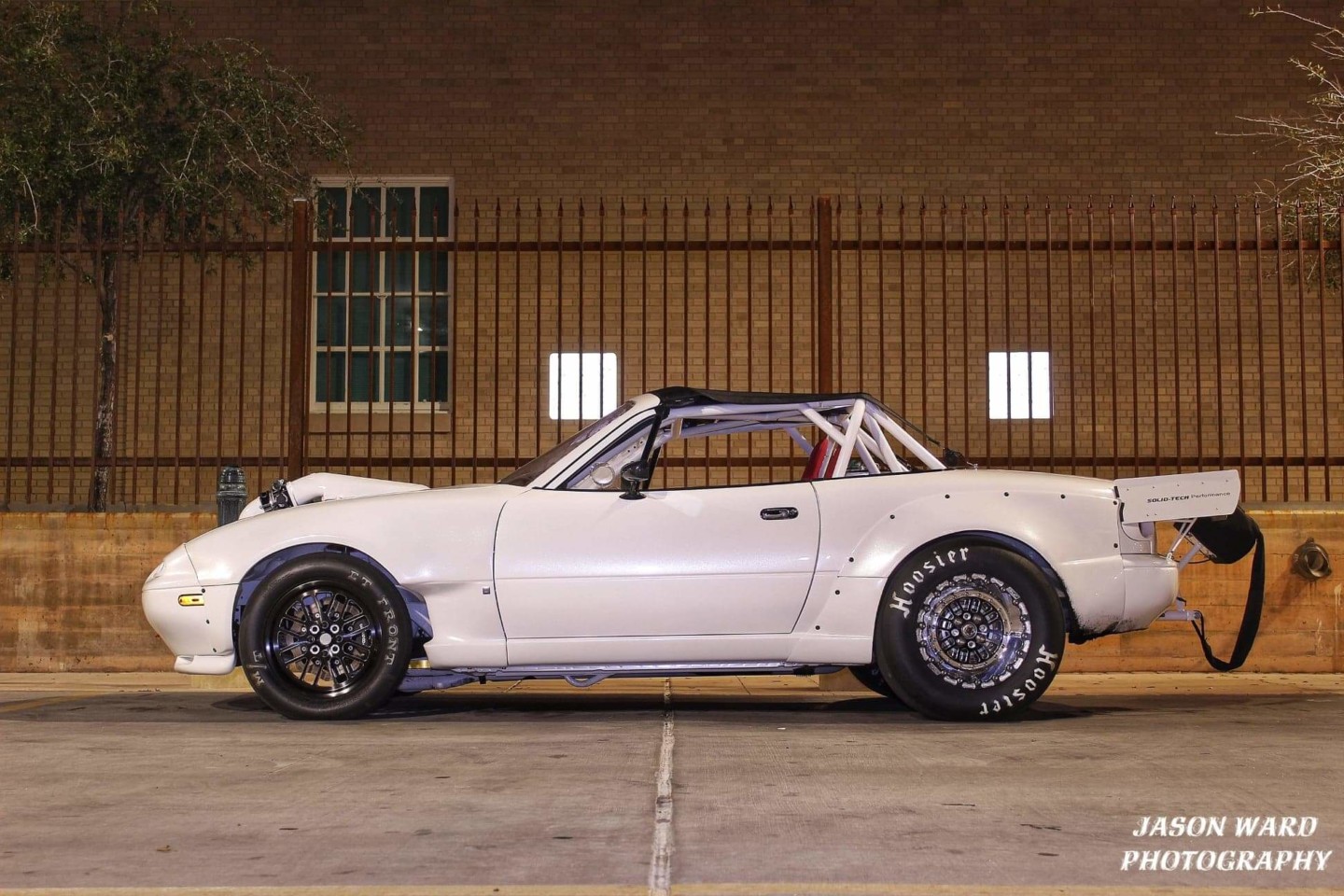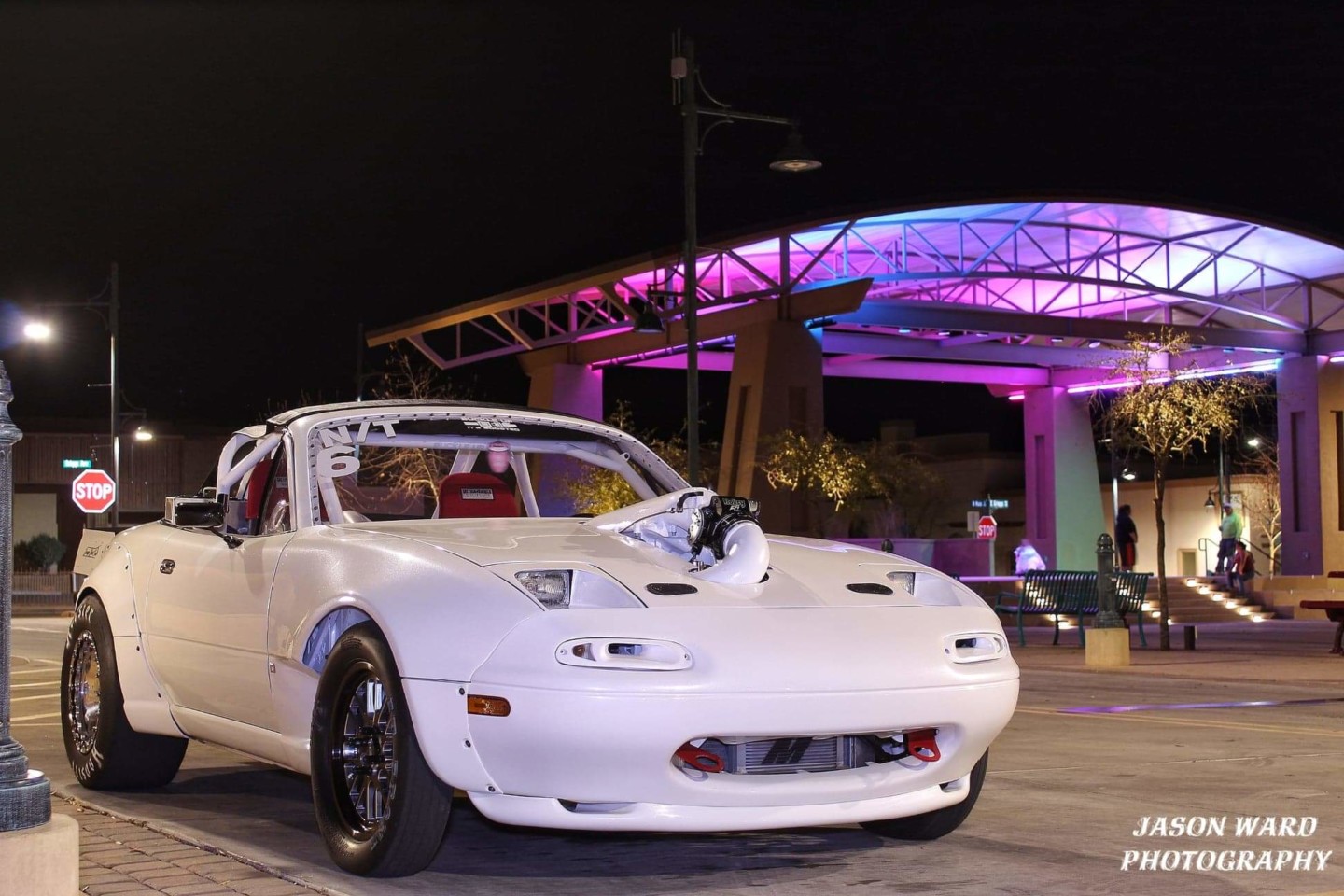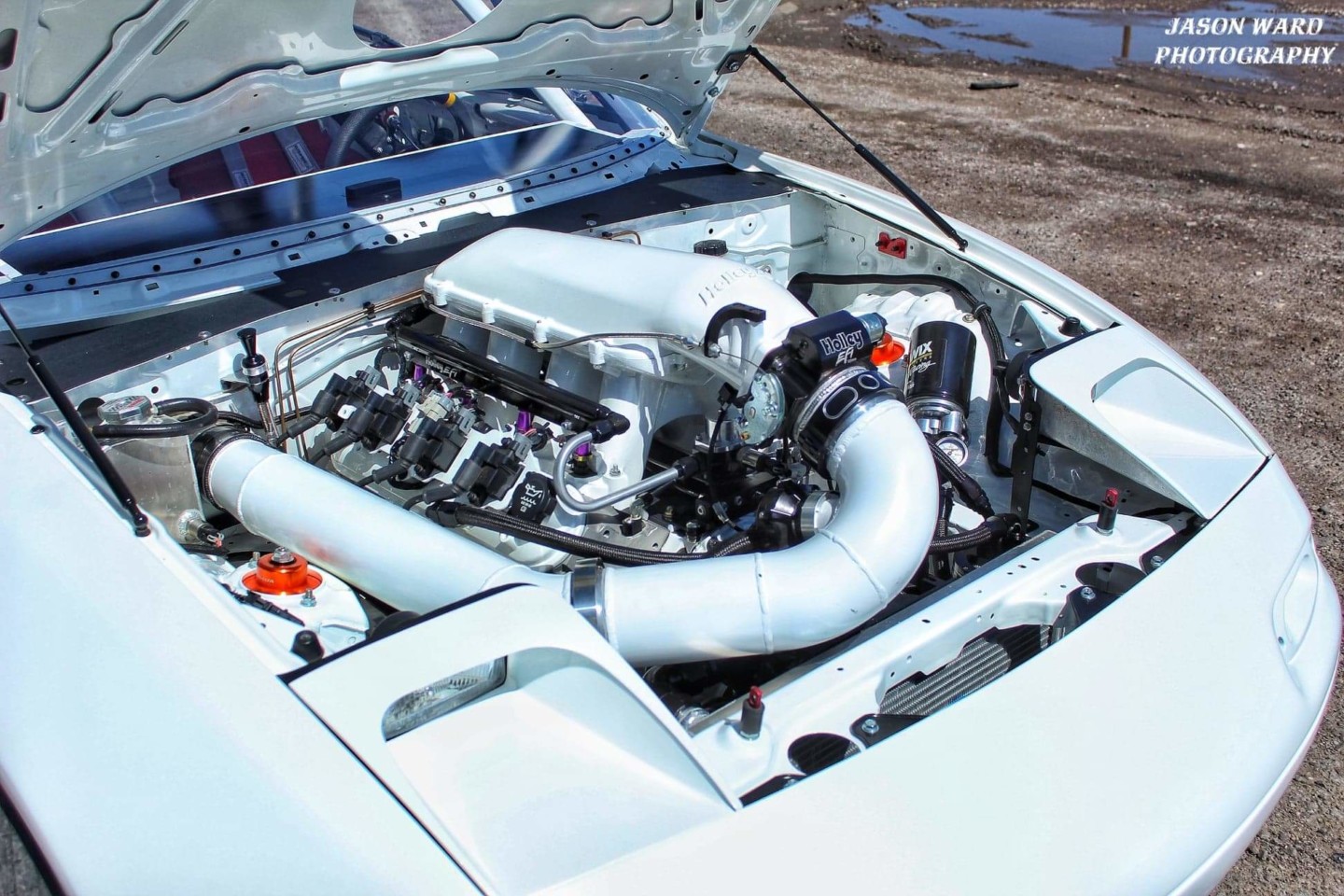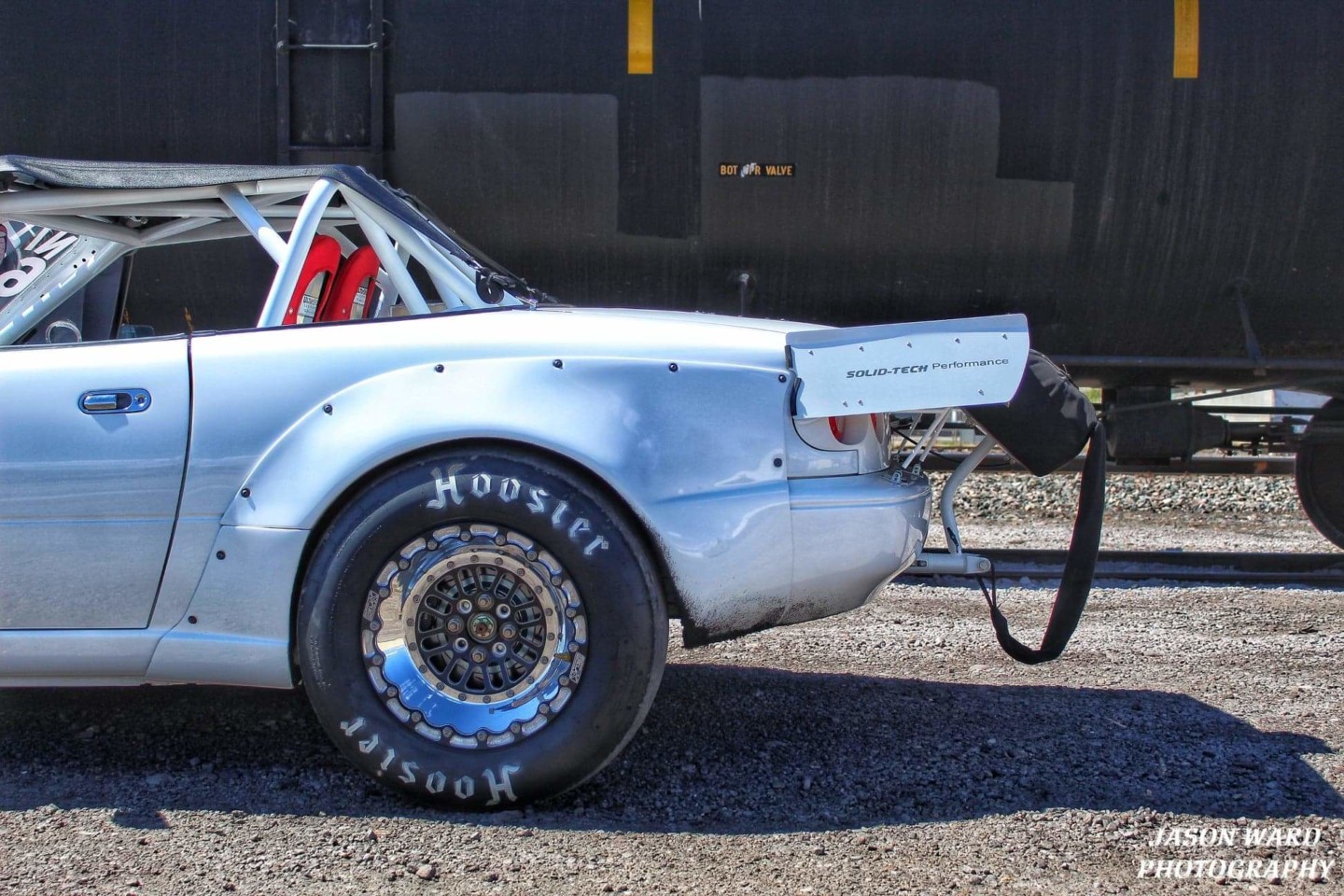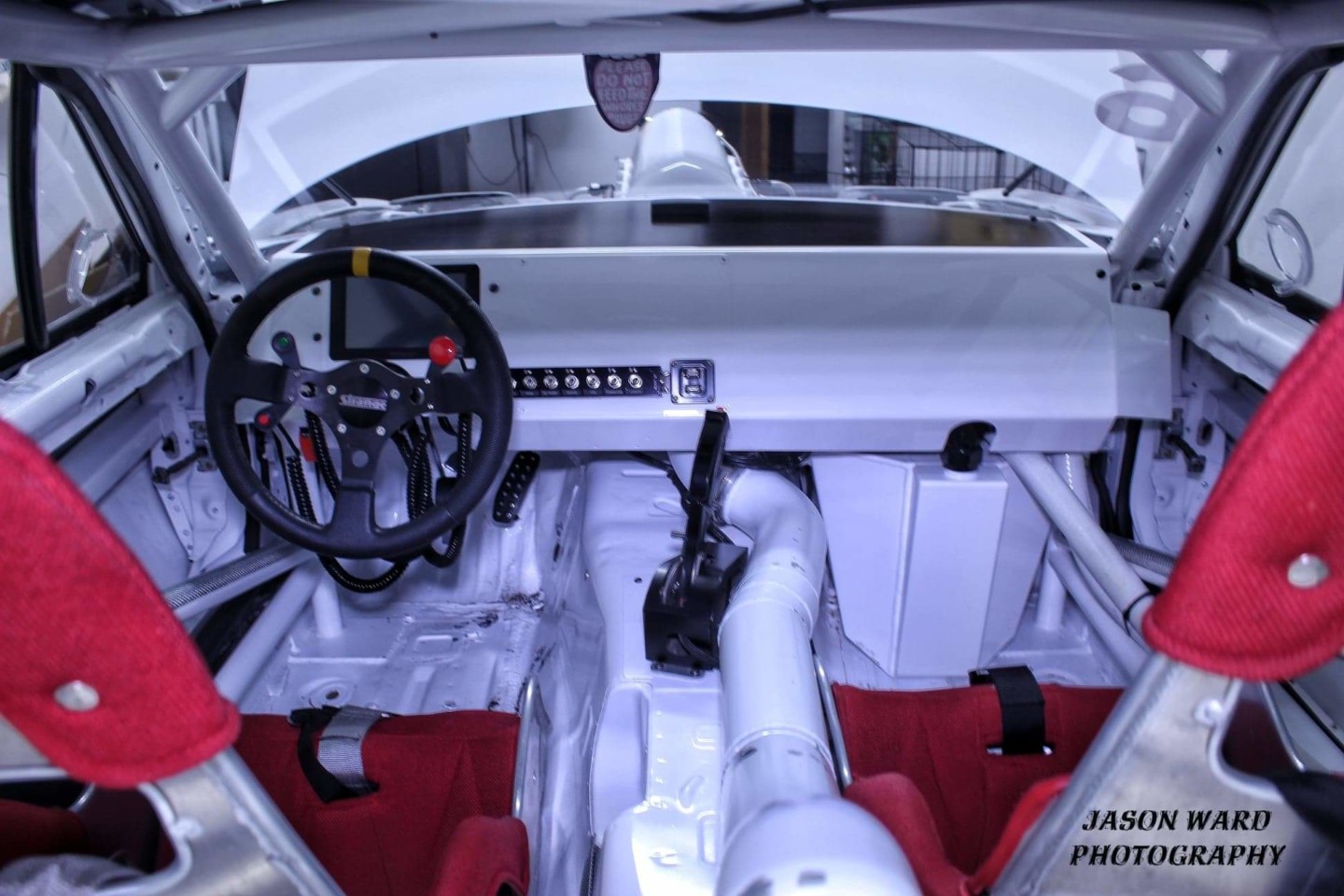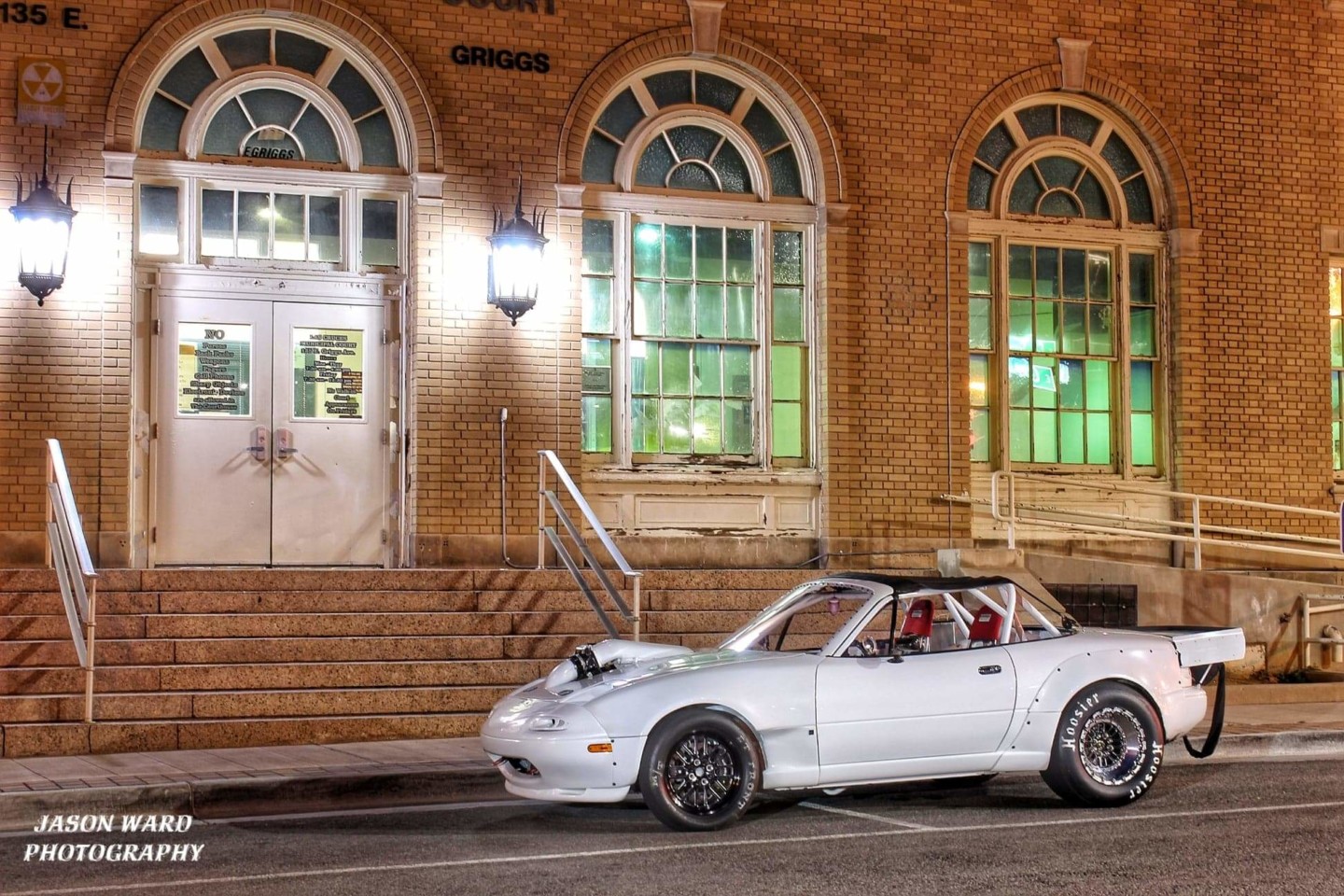One of the hottest things going right now in the world of drag racing is no-prep. If you’re not familiar with this type of event, tune in for an episode of Street Outlaws. It’s drag racing on the street or at a track without the sticky stuff sprayed down to promote adhesion. While no-prep takes place at the drag strip, Cash Days is another no-prep style of racing that takes place on the streets or in “Mexico,” as the racers call it. This form of racing is popular because it takes more than a fast car to win — you need to be fast, but you also need to know how to make a car hook on any surface.
Photos By: Jason Ward Photography
Chase Griffiths, a welder and mechanic by trade, thoroughly enjoys oo-prep drag racing. However, his vehicle of choice might surprise most of you. Instead of building another LS-swapped Fox-body Mustang, he went an entirely different route: the 25-year old decided to construct a Mazda Miata for his drag car.
Chase grew up around lowriders as a kid, and once he got involved with street racing, he never looked back. And his trade as a welder has played a crucial role in his hobby. Griffiths said, “I started welding my freshman year of high school and built my first cage during my senior year after learning how to TIG weld at a local community college. After that, I took on side jobs doing fabrication work on cars. I’ve done multiple 8.50-cert cages and 25.3’s, not to mention many custom exhaust and turbo systems.”
While in high school, Chase knew he wanted to LS-swap a car, but like most students, he couldn’t afford to buy one outright. At the age of 14, he started looking for an engine to build, eventually locating a 6.0-liter on Craigslist for $600 that he and his dad went and picked up. With the engine built over a year or two, it was time for a car. Chase found the Miata on Craigslist from a lady that lived about 15 minutes out of his town. Chase said, “The owner was pretty attached to her car, and if she knew what my plans were for it, she probably would’ve never sold it to me.”
I broke the car at the first race I took it to, which was a parts failure. I pulled it apart to fix that and I decided to do a turbo build.
Chase began the build in 2012 and had the Miata swapped and running by the spring of 2014. He said, “It was just a 6.0-liter with a T56 and some nitrous back then. I broke the car at the first race I took it to, which was a parts failure. I pulled it apart to fix that and I decided to do a turbo build.” Chase disassembled the car in 2014 and didn’t get it back on the street until 2019. “I lost interest for a year during that time and was about four years into it. However, it was well worth the time and effort. I built 95-percent of the car out of my parent’s garage before I got a shop and assembled it and wired it there,” Chase explained.
During the rebuild, he made several changes to the Miata. He started by cutting out the mild steel cage that he fabricated in high school and replaced it with a chrome-moly unit. His father helped him repaint the car before taking it to his shop for reassembly. While putting the car back together, he decided to ditch the factory ECU and wiring. He said, “When it came time for wiring, my friend and tuner Sean Stanford said I should ditch the factory ECU and go to the Holley Dominator. It was one of my best decisions I’ve made for the car. I also decided to go with the Racepak Smartwire to run all the electrical components. There’s no fuses or relays, everything is a solid-state inside the Smartwire box.”
While Chase was making changes to the Miata, the engine was assembled at Hobbs Performance in Las Cruces, New Mexico. The Gen III block was bored .030-inches over and machined for 1/2-inch head studs. A set of forged 10:1 compression Wiseco pistons were mated to a set of Texas Speed & Performance H-beam rods with ARP 2000 rod bolts. Chase got in touch with Lil’ John Motorsports for the custom camshaft for the turbocharged 370 cubic-inch engine. GM cast 243 heads were used after they were machined and decked. The stock valves were replaced with 2.02-inch intakes and 1.57-inch exhausts, both of which are stainless steel. Factory rockers were used but not before receiving a trunion upgrade.
Another area that Chase was able to show off his skills was on the turbo system, as he fabbed up the hot and cold side of the kit. A Garrett GT47 88mm turbo keeps the LS spooled up, while a Tial Q50 blow-off valve and twin 46mm Precision Turbo wastegates keep the levels at bay. The LS sees 22-pounds of boost, even though Chase is planning for a larger turbo in the future. A PT3000 air-to-water intercooler does its job at keeping the air cool as it enters the Holley 105mm throttle body and Hi-Ram. A massive 5-inch downpipe gets the spent exhaust gasses out of the engine efficiently.
As you can imagine, the drivetrain has also been beefed up on the Miata. A Powerglide transmission built by Chase and David Dotson handles the gear changes with all of the high-performance parts you could want. The guys started with a TCI SFI-rated case and added a TCI valve body, trans brake, and FTI clutches. A Neal Chance torque converter makes sure the car leaves hard with a 6,500 RPM stall speed. A 4-inch Aluminum Driveshaft Shop driveshaft routs the power to a Ford Cobra 8.8-inch independent rear suspension (IRS) equipped with 3.55 gears, a spool, and Driveshaft Shop 300M axles.
Chase’s Miata rolls on a set of Belak Industries one-piece billet 15×4-inch wheels on the front with 15×10-inch wheels on the back. While Mickey Thompson 24×4.5-inch tires are wrapped around the front wheels, Hoosier 26×10-inch tires are utilized in the rear.
When you have a hot tune-up loaded, you’ll feel the car start skating around and hazing the tires.
This Miata weighs 2,700-pounds with Chase in the seat, and has a wheelbase of only 89-inches. With 940 horsepower to the wheels, you would think it would be a handful at the track or on the streets. Chase explains, “When you have a hot tune-up loaded, you’ll feel the car start skating around and hazing the tires. Most of the time, you can drive through it without it getting out of hand. However, we have been to a couple of events with good rubber and concrete that will take about everything the car has. So, I’m switching the combination to a Borg Warner S491 from Forced Inductions, along with a pair of Brodix BR1 cylinder heads from SPS. The mods should pick us up as much power as the factory crankshaft can hold. Maybe we can run with the fast guys now.”
If you want to see the Miata run, don’t go to a prepped race. Chase said, “We run in any Cash Days style or no-prep events we can participate in. In the past year of racing, we were able to pull off two wins and made it to multiple finals. This year, we’re taking what we learned last and applying it the best we can to hopefully come out with a few more wins.”
Unfortunately, the Miata is a no-time car, meaning the elapsed time and speed are not displayed to the public. And Chase is reluctant to tell us anything, even though we tried to bribe him with some free decals – we did our best. And while we don’t know how fast it is, we can safely bet that this little Miata is a rocket.
Chase would like to thank his parents for allowing him use their garage, brother-in-law Jose, Jason Ward, Omar Jurado, Don Anderson, Chris Kinney, Vince Moya, and the rest of the Albuquerque crew. He also wanted to give a shoutout to SolidTech Performance, Dyno Edge, Penske Racing Shocks, LJMS, and Neal Chance Racing Converters.
